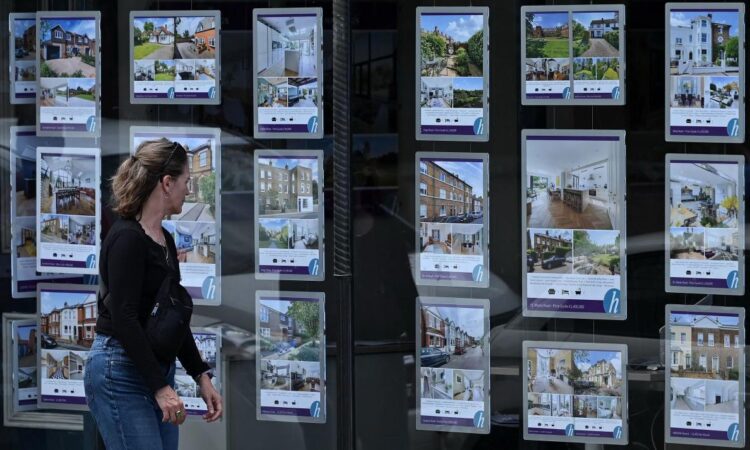
The UK housing market has kept pace in June, despite a wobble at the top end of the market, according to real estate platform Rightmove’s (RMV.L) latest data.
The average price of property coming to the market dropped by £21 this month to £375,110, as prices in June follow the same seasonal pattern as recent years, remaining flat after reaching a record in May.
Price trends meanwhile have differed across the UK, with the strongest price growth in the less expensive and more northerly regions. Five of the six cheapest areas have reached new price records.
By contrast, the higher-priced East of England and London regions have lagged, with this month’s only regional price falls, Rightmove said.
Rightmove cited pent up demand as one reason for some momentum in the market.
Read more: Best UK savings accounts offering above inflation rates
In the first four months of the year, the number of sales agreed between buyers and sellers was 17% higher than in the same period in 2023, outstripping the 12% increase in the number of new sellers coming to market.
Like pricing activity, these trends are being driven most by the top-of-the-ladder sector, made up of four bedroom detached and five bedroom plus properties. A lack of available homes for sale in this sector during the pandemic years, together with the rapid rise, and subsequent volatility of mortgage rates in the post-mini-budget period, meant that activity in this sector was particularly susceptible to some potential movers taking a step back.
Now, with mortgage rates more stable albeit still high, and greater buyer choice, many who had postponed their moving plans in this sector appear to be returning.
The data follows the Bank of England‘s (BoE) decision to leave UK interest rates on hold at their 16-year high of 5.25% for a sixth consecutive time.
Election uncertainty doesn’t stop movers
A poll of over 14,000 home-movers suggests that activity is largely remaining stable, despite the potential uncertainty after the election.
The number of sales being agreed and the number of buyers sending enquiries to agents remain steady, with the vast majority of those already in the home-moving market continuing with their plans.
Read more: What is shared ownership? A myth-busting guide
One exception is possible election caution among some would-be sellers, which is most pronounced for those at the typically more discretionary top end of the market, some of whom appear to be pausing their plans to see how the next few weeks unfold, Rightmove said.
All major parties have made pledges on housing, from getting more first-time buyers onto the ladder, to rent controls on landlords.
“Some potential sellers appear to be watching and waiting rather than taking action, evidenced by a dip in the number of new sellers coming to market, particularly at the top-end,” said Tim Bannister, Rightmove’s director of property science.
“This is understandable when many of these sellers have more flexibility over when they act, but overall, it appears to be business as usual for the mass-market.”
Watch: UK inflation was ‘inevitable’
Download the Yahoo Finance app, available for Apple and Android.
